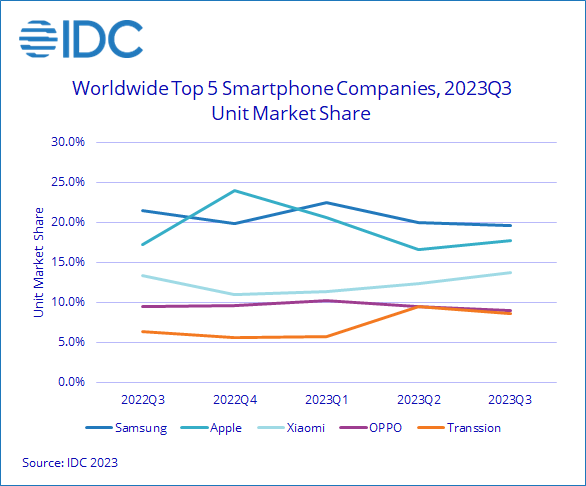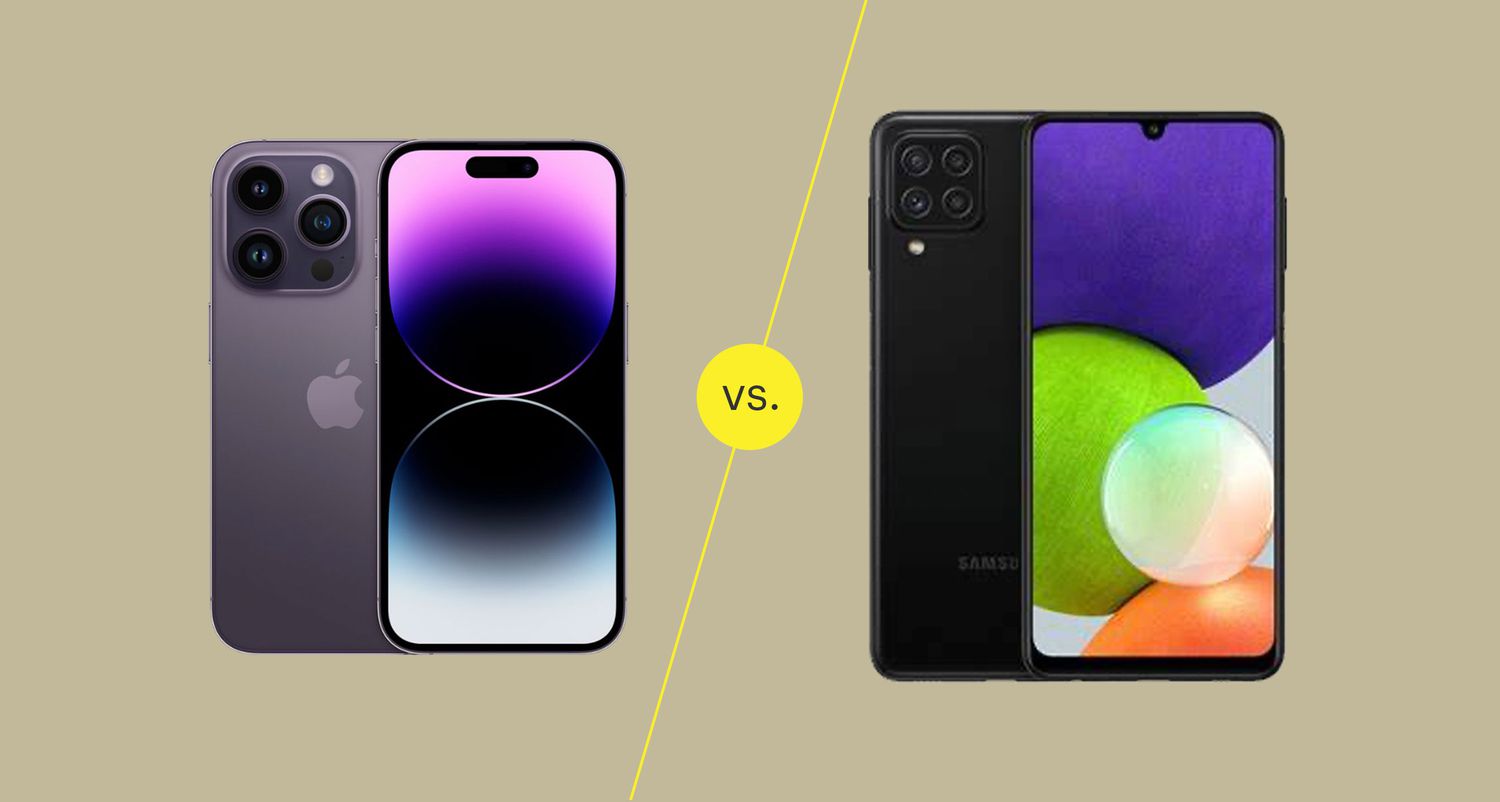Introduction
The smartphone market is highly competitive, and companies are constantly striving to gain an edge over their rivals.
In Q3 2023, the top five smartphone manufacturers, based on market share, are Samsung, Apple, Xiaomi, Oppo (including Oneplus), and Transsion.
In this blog post, we’ll delve into the positives and negatives for each of these companies in the coming times.

Image Credits: IDC
1. Samsung(20%)- 59.5 M
Positives:
- Strong Market Share: Samsung continues to maintain its position as the leader in the global smartphone market with a 20% market share. This is a positive sign of the company’s enduring popularity.
- Diverse Product Portfolio: Samsung offers a wide range of smartphones catering to various price points and consumer preferences. This diversity can help them capture a broad customer base.
Negatives:
- Increasing Competition: While Samsung holds the top spot, the competition is intensifying. Emerging brands and technological advancements could challenge their position.
- Declining Profits: Maintaining a dominant market share comes at a cost, and Samsung’s profit margins have been squeezed due to fierce competition and rising manufacturing expenses.
Read More: Samsung 1.4 nm to Feature 4 Nanosheets, Competitive Edge Over TSMC and Intel
2. Apple(17%)- 53.6 M
Positives:
- Strong Brand Loyalty: Apple enjoys unparalleled customer loyalty, with users often remaining committed to the brand for years. This loyalty ensures a stable customer base and recurring revenue.
- Innovation: Apple continues to invest in cutting-edge technology and software, leading to innovative products such as the iPhone 14. This approach keeps the brand fresh and exciting.
Negatives:
- Premium Pricing: Apple’s devices are known for their premium prices, which can limit their reach in emerging markets and among cost-conscious consumers.
- Market Saturation: The smartphone market is reaching a saturation point, with most consumers already owning a smartphone. Apple may find it challenging to sustain rapid growth.
Read More: iPhone 15 Sales in China Fall 6%! Apple Loses Ground to Huawei
3. Xiaomi(14%)- 41.5M
Positives:
- Aggressive Pricing: Xiaomi is known for offering feature-packed smartphones at competitive prices, making them appealing to budget-conscious consumers.
- Rapid Expansion: Xiaomi’s global presence is expanding rapidly, helping them tap into new markets and gain a larger user base.
Negatives:
- Competition in the Budget Segment: While Xiaomi excels in the budget segment, competition from other brands can erode their market share in this category.
- Brand Recognition: Xiaomi’s brand recognition, while improving, still lags behind giants like Samsung and Apple.
Read More: China develops AI chip 3,000 times faster than Nvidia’s A100
4. Oppo (including Oneplus)(9%)- 27 M
Positives:
- Diverse Portfolio: Oppo and OnePlus cater to a wide range of consumers, from budget to flagship, offering a diverse product lineup.
- Innovations in Camera Technology: Both brands have made significant strides in camera technology, attracting photography enthusiasts.
Negatives:
- Overlapping Offerings: The overlap between Oppo and OnePlus product offerings can sometimes confuse consumers and cannibalize sales within the same parent company.
- Market Saturation: Like Apple, Oppo and OnePlus face the challenge of a saturated market, where consumers may not be looking to upgrade as frequently.
Read More: How China Circumvented US Restrictions to Unveil 120 Layer NAND Flash
5. Transsion(9%)- 26 M
Positives:
- Focus on Emerging Markets: Transsion primarily targets emerging markets, where there is significant growth potential.
- Value for Money: Brands like Tecno and Infinix offer budget-friendly smartphones with features that resonate with consumers in these markets.
Negatives:
- Limited Global Presence: Transsion’s success is primarily concentrated in select regions, and it may struggle to break into more established markets.
- Brand Recognition: While they have a strong presence in some regions, Transsion’s brand recognition is relatively low in comparison to global giants.
Conclusion
The smartphone market in Q3 2023 showcases a dynamic landscape, with each of the top five players having its set of advantages and challenges. Samsung and Apple are holding their ground as the top two players, but they face stiff competition and market saturation.
Xiaomi, Oppo, and Transsion are leveraging their strengths to expand their market share and cater to a diverse range of consumers. As the smartphone industry evolves, only time will tell how these companies adapt to the ever-changing market dynamics and consumer preferences.








